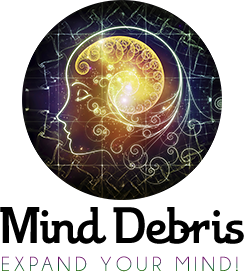Hallucinogens Can Improve Your Personality
[Please note that this page contains affiliate links. If you choose to purchase after clicking a link, I may receive a commission at no extra cost to you.]
Two recent studies explain the actions and benefits of LSD and psilocybin.
How Do Hallucinogens Work?
The mechanisms set in motion in the brain after taking psilocybin or LSD are unknown. Psychedelics do not create insights into things that are not present; usually, they change the capacity of the brain to characterize the view of objects that are there.
For example, psychedelics that change the function of the visual cortex will distort proportion, movement, form, and the colour of items, although the items will remain identifiable. Thus, to comprehend how the brain can hallucinate, you need to recognize how your brain creates an everyday experience.
A new study merged three neuroimaging methods, one called functional magnetic resonance imaging, another named diffusion magnetic resonance imaging, and the third is called positron-electron tomography, to rationalize the observed changes, in real-time, of psilocybin (magic mushrooms).
The researchers start by identifying the sizeable globular brain region named the thalamus. The thalamus is found deep in the brain’s center and relates to the overlying cortex.

Hallucinogens
All our sensory experience is received, processed, and dispersed to commonly connected regions of the cortex; the recurrent crosstalk between these two regions of the brain is believed to trigger your experience of waking consciousness.
As the connectivity changes over time, you experience a vigorous stream of consciousness in response to the incoming sensory information constantly flowing forward.
Additionally, the anatomy of each sensory area of the cortex is intended to keep its management separate from other sensory regions. Finally, the description raises how psychedelics create this disruption of subcortical and cortical integration.
All the known species of psychedelics, except for one, at doses characteristically accomplished in the brain, all network with at least six different serotonin receptors.
The psychoactive actions of psilocybin and LSD are likely due to their ability to activate one specific serotonin receptor, called 5HT2A. LSD enters the brain about three minutes after consuming it; the LSD effects are maximized at about one to three hours.
Psychedelics and the Effects
Radioactive molecules of LSD are concentrated within the visual cortex of the occipital lobe, which is found throughout the limbic system, and in the brain stem. In just a few minutes after consuming psilocybin or LSD, the action of serotonin neurons in the brain stem region is almost completely gone.
The effects of psilocybin and LSD far outlast the reduction of neural serotonin activity; hence, the slowed-down activity of serotonin neurons in the raphe nuclei doesn’t explain why we hallucinate on these psychedelics. Instead, the early effects of these hallucinogens on serotonin neurons might only be the initial signal that sets in motion a waterfall of complex procedures throughout the brain that is experienced as a hallucination.
In the study by Madsen et al., ten healthy individuals each received a dose of psilocybin and then listened to a music playlist. Eight of the ten volunteers described a “complete mystical experience” based on taking a survey about the Altered States of Consciousness.
A week later, the participants were again imaged to look for specific changes in 5HT2A receptors. Finally, three months later, the volunteers were assessed for indicators of personality, mindfulness, and other long-term effects. Again, the scientists discovered that the participants’ levels of mindfulness managed to increase from baseline to the follow-up.
5HT2A
Changes in 5HT2A receptor binding in two of the brain regions of the frontal lobes were contrariwise correlated with the changes in mindfulness three months after receiving the psilocybin.
The researchers speculated that the changes in neocortical 5HT2A receptor binding might cause long-lasting beneficial effects on personality and mood. The researchers concluded that there are consistent with many of the previous studies that have proven that stimulating the 5HT2A receptor can significantly reduce anxiety.

